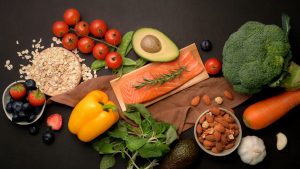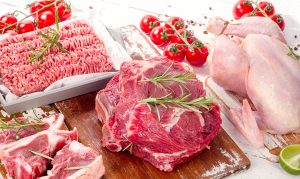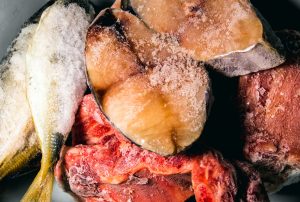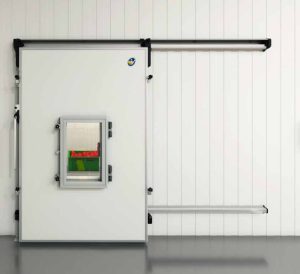The use of cold stores in general markets
For large and small retailers.
General Markets
Mercati Generali are a nerve center in the distribution of agro-food products as they can be considered the link between large-scale distribution (understood as logistics and not as points of sale) and small distribution (understood as points of sale located throughout the of a certain area).
Given the considerable variety of goods that are sorted inside them on a daily basis (fruit, vegetables, white and red meat, fish, etc.), the logistics of using the cold rooms therefore appear to be of fundamental importance, but even more the functionality of the doors of the themselves.
Indeed, in the Mercati Generali, the handling of the various types of goods is the essence of daily activities and this must be carried out not only in complete safety, but also in compliance with the regulations in force and with full maintenance of the organoleptic qualities of each type of food is offered for sale within them.
Fruit and vegetable preservation

Meat preservation

The use of cold room doors for meat storage
MIV Insulating Systems has in its catalog the PG series, with guideway passage for the sliding of the half-carcasses, type 200PG (with hinged leaf closure) and type 900PG (with sliding leaf) which allow you to use in complete safety and with an optimal yield this particular type of cold room.
Cold store door Model 200 PG
Cold store door Model 900 PG


The use of cold room doors for fruit and vegetable storage
In the case of fruit and vegetables, in addition to the conservative aspect, there is a further parameter to take into consideration which is that of blocking the ripening without risking ruining the fibers and, consequently, the organoleptic properties of the various products; some of these, such as salads for example, are in fact placed in the cold chain immediately after being picked and at the end of the first cleaning and storage inside the cells of the General Markets must guarantee the correct maintenance of their characteristics.
A similar argument also occurs for fruit where, as already mentioned, the ripening process is an additional variable to be taken into consideration; precisely for this reason it is usual to have cold rooms for fruit and vegetables which are calibrated at a temperature a few degrees lower than the 8/10 °C with which they are kept in the cold rooms in large-scale distribution.
Here, too, MIV Insulating Systems has a wide range of models (both hinged and sliding) that allow for a perfect seal over time, even in the case of very frequent handling such as in positive temperature cold rooms or in Controlled Atmosphere Storage, where it is very common to store goods that exceed a certain time limit
Details door 900 ATC (Atmosphere Controlled)



For all cold rooms where fresh product is stored, it is also very important that the cooling of the cold room takes place by controlling the three fundamental parameters such as air speed, flow rate and temperature, so as not to deteriorate the product or create imbalances which could be source of bacterial contamination.
Fish preservation

The advantages of using cold rooms inside Mercati Generali are therefore many and can be summarized in the following points:
– They allow, according to current legislation, the maintenance of the so-called “cold chain”
– They keep fruit and vegetables fresh, slowing down or even blocking their natural ripening
– They allow fast handling of goods strictly according to the FIFO (First In- First Out) system
Within the Mercati Generali, the cold rooms must therefore be structured in such a way as to provide quality in operations; in addition to the cells in which the various products are stored, there are also air-conditioned areas which allow both the organized and fast handling of goods and the presence of personnel in complete safety; these areas, in fact, have a slightly higher temperature than the actual cold rooms (from 10 to 16 °C depending on the type of goods to be moved and present in the adjacent cold rooms) so as to have an environment that can be suitable for parking even length of the various employees.
Contact information for cold storage doors.
For further information write to us in our modulo contatti.
Contact whatsapp: https://api.whatsapp.com/message/BWKLO7GYVGFDK1
Link Facebook: https://www.facebook.com/mivrefrigeration
Link Linkedin: linkedin.com/company/mivinsulatingsystems

